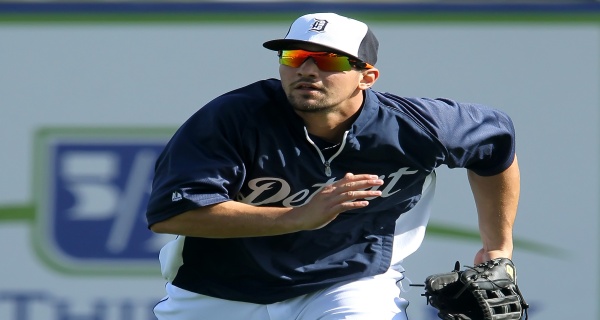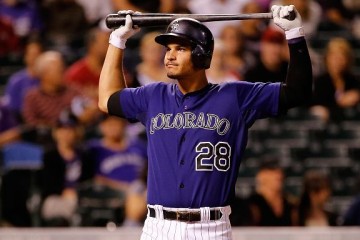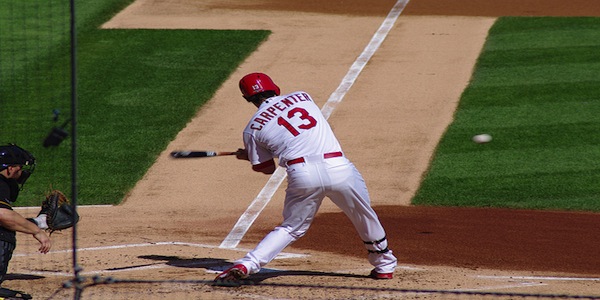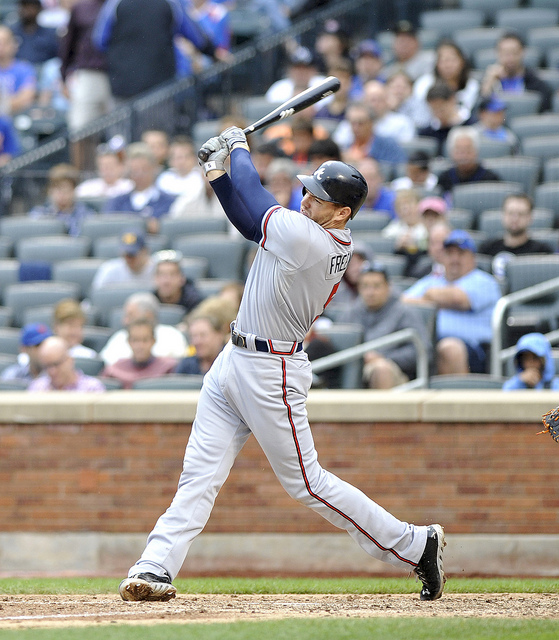2016 Fantasy Baseball: Breakout Players — Nick Castellanos

There is nothing more fun than watching a big time prospect finally get it at the big league level. It is the one thing that no one can really predict. Sometimes it takes days. Sometimes it takes weeks. Sometimes it takes years. For Nick Castellanos it obviously took years, but this year he seems to have finally gotten it. The once top prospect had struggled for two seasons to establish himself, but those hard times seem to be behind him.
As we’ve always done, let’s take a look at the top five guys on the draft board from Castellanos’ position and see how they have been doing so far. At first glance, third base would seem to be the deepest position on the diamond because more of the top guys are doing well than the other positions, but sometimes looks can be deceiving.
The Top Five
| AVG | HR | Runs | RBI | SB | BB | |
| Josh Donaldson | .250 | 13 | 43 | 30 | 3 | 33 |
| Manny Machado | .308 | 14 | 39 | 35 | 0 | 25 |
| Nolan Arenado | .291 | 18 | 42 | 47 | 1 | 24 |
| Kris Bryant | .274 | 13 | 40 | 40 | 1 | 23 |
| Miguel Sano | .235 | 11 | 25 | 27 | 1 | 29 |
True enough, of the preseason top five, three of them are still in the top five and Bryant ranks sixth. Those who picked a top five (or even top ten) third basemen are probably pretty happy with their choice. Only Miguel Sano sags, and that is primarily because he is currently on the disabled list. Still, there are those that punted third base on draft day and those are the kinds of players that would have been happy with someone like Castellanos.
Currently he is hitting .315 with 10 home runs, 24 runs scored, and 33 RBI. Sure, he may not have the numbers of a Arenado or a Machado, but he belongs in the conversation and that is a huge improvement over the past couple of seasons. Just take a look at where he has come since he made his debut in 2014.
| AVG | HR | Runs | RBI | SB | BB | |
| 2014 | .259 | 11 | 50 | 66 | 2 | 36 |
| 2015 | .255 | 15 | 42 | 73 | 0 | 39 |
| 2016 | .315 | 10 | 24 | 33 | 1 | 11 |
As you can see, the numbers were never truly horrible, but for someone that once hit two home runs in the Futures Game, the numbers of the past two seasons seemed a little too pedestrian to get excited about. However, much like J.D. Martinez before him, Castellanos has blossomed into one of the better hitters in the league. However, one of the things we do here is evaluate whether a player has really broken out or whether he is benefiting from batted ball luck.
Plate Discipline
One of the two major categories for evaluating hitters is evaluating their plate discipline. Plate discipline can be separated from hitting. Essentially, we are looking primarily at process. How often does a player swing at bad pitches for instance? Do we see growth in this department or is the player stable over time? From there, we can look at contact rates on various types of pitches to see if the player is growing or declining.
| SO% | BB% | Oswing | OContact | Zcontact | Contact | |
| 2014 | 24.2 | 6.2 | 32.9 | 51.0 | 84.9 | 72.8 |
| 2015 | 25.5 | 6.6 | 34.2 | 53.2 | 83.8 | 71.9 |
| 2016 | 25.1 | 5.2 | 35.8 | 58.6 | 82.9 | 74.1 |
In this table we can plainly see the difference between the hit tool and the plate discipline tool. Castellanos consistently swings at more pitches out of the zone than the average hitter (usually 30 percent on balls outside the zone). Yet he has made more contact on those pitches as his career has gone on. That could explain some of the improvement we’ve seen, but he is missing more pitches in the zone than he did when he came up. Therefore, contact rates have been fairly stable. Also, notice his strikeout and walk rates have been fairly stable. The plate discipline data doesn’t really explain the surge.
Batted Ball
Plate discipline data can help explain how often you make contact and on which types of pitches you most likely make contact, but it doesn’t indicate what kind of contact we are talking about. Most of the time, a surge can be explained by the wild variability that is batting average on balls in play (BABIP). Sometimes that is just blind luck and sometimes a hitter starts hitting the ball harder more consistently.
| BABIP | LD% | GB% | FB% | HR/FB | Hard | |
| 2014 | .326 | 28.5 | 35.0 | 36.5 | 7.5 | 34.0 |
| 2015 | .322 | 23.3 | 36.2 | 40.4 | 9.2 | 32.8 |
| 2016 | .380 | 25.9 | 29.3 | 44.9 | 15.2 | 35.4 |
Castellanos’ batted ball numbers are really quite remarkable. His BABIP is well above average, but he has significantly outproduced the league average (.300) for his whole career. The explanation can be found in his batted ball statistics. He hits more line drives and more balls hard than just about every other hitter in the league. That would be fairly consistent with an advanced hit tool as he was purported to have since he has been in the minors.
That brings us to this season and why there has been such a change. The one major difference comes in the lower percentage of grounders he has hit and the corresponding rise in fly balls. Couple that with a much healthier home runs per fly ball percentage and you can see where the increased power is coming from. While a .380 BABIP seems a little optimistic to keep carrying, he should maintain a healthy BABIP given the kind of contact he has been making.
The Final Verdict
As usual, actual growth and the basic numbers we see are not necessarily the same thing. Make no mistake, Castellanos is a better hitter in 2016 than he has been the past two seasons, but there is a regression that is probably bound to happen. Still, for someone looking for help at third base, a probable .280/20/80/80 type of third baseman is a welcome addition to any fantasy lineup. Castellanos owners would be wise to shop him now and see what they can get, though.




